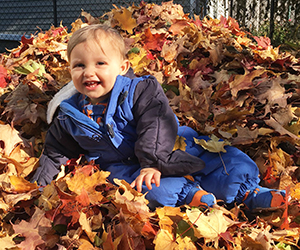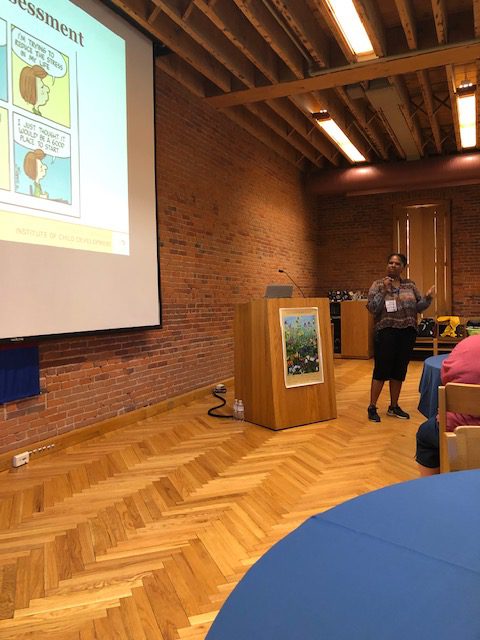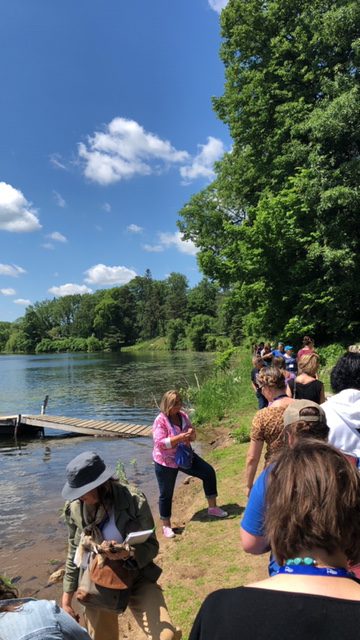
Despite a brutal late winter and spring in Minneapolis, a hearty team of children with autism and other neurodevelopmental disabilities (NDD) and their families more than doubled their average time outdoors during a six-month project exploring the health benefits of interacting with nature. Mollika “Molly” Sajady (MNLEND Fellow, 2018–19) and her mentor, Andrew Barnes, M.D., an Assistant Professor of Pediatrics at the University of Minnesota Medical School, co-led the project as part of ICI’s Minnesota Leadership Education in Neurodevelopmental and Related Disabilities Program (MNLEND). Sajady is the mother of Luca (pictured last fall at age 8–10 months) and is a Developmental-Behavioral Pediatric fellow physician at the University’s Voyager Clinic, a developmental-behavioral clinic. After playing outdoors during the summer months, children are physically and mentally fit, but with the start of fall, it can be difficult for families to keep children healthy and connected to nature when the weather turns cold. Using motivational interviews and goal-setting, Sajady and her Voyager Clinic colleagues coached 28 participants on specific strategies for reaching their targets for outdoor activity.
Beginning in February, the team asked families about how much outdoor time they averaged per week over the past year and their new goal. After discussing what participants like to do outside, staff guided them to make a reasonable action plan. If families struggled with ideas, staff offered to search for parks or outdoor spaces close to home. The goal-setting and accountability were motivators, but all participants contributed to the project’s success, Sajady said. For example, some families tied in educational opportunities when they were outside together, such as discussing the benefits of vitamin D with their children. Others defied the cold winter weather by simply wearing more warm clothes. Some families said they would like the clinic to organize more outdoor activities.
Following up on the families’ requests for expanding outdoor opportunities, Sajady is working with the Minnesota Department of Natural Resources to educate health care providers about the developmental and health benefits of encouraging children to spend more time in nature. As part of this community partnership, staff hope to create a database of accessible and sensory-friendly parks in Minnesota. Voyager Clinic also plans to combine nature interventions with anxiety treatment programs for children with NDD. “Children with neurodevelopmental disabilities and their families deserve to take advantage of the health benefits of spending time in nature by finding enjoyable, accessible ways to get outside,” says Sajady.




